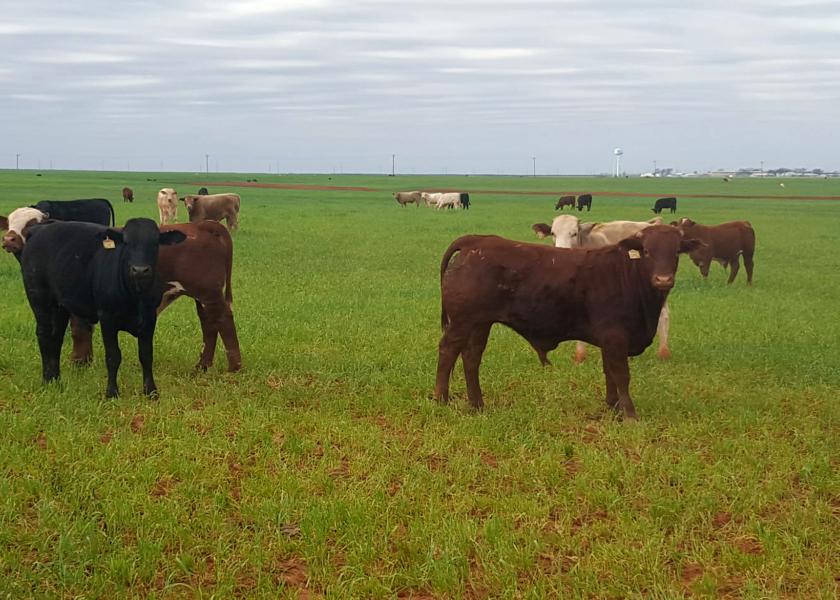Derrell Peel: Forage Conditions Pressure Feeder Cattle Prices

According to the Oklahoma Mesonet, the last thirty days are the sixth driest on record for this period in the state of Oklahoma. The situation is much more extreme in the western part of the state with the Panhandle, North Central, West Central and Southwest regions all reporting the driest total for this thirty day period in 100 years of records. All of these regions reported less than 0.1 inches of rainfall for the period.
Drought conditions have expanded rapidly across the state with the Drought Monitor showing 32 percent of the state in some level of drought (D1-D4) and another 27 percent of the state abnormally dry (D0). One month ago in mid-September, just 17 percent of the state had D1-D4 conditions with another 9 percent abnormally dry (D0).
Deteriorating range and pasture conditions reflect the lack of rainfall. The latest conditions show that 13 percent of pastures are in very poor condition, up from 5 percent four weeks ago. Pastures in poor condition increased to 19 percent from 10 percent four weeks ago. Pastures in good to excellent condition dropped from 50 percent four weeks ago to 23 percent in the current data.
Winter wheat is an important winter forage in Oklahoma. The latest crop progress report shows that 69 percent of Oklahoma wheat is planted with 39 percent emerged, both ahead of the five-year average for this date. However, rapidly drying soil moisture conditions means that wheat growth will stall out very soon without additional rainfall. Wheat planted recently may not have sufficient topsoil moisture to germinate. Diminishing wheat pasture prospects is limiting stocker cattle demand for winter grazing and will impact cow-calf producers who count on wheat forage as part of winter feed supplies.
The October USDA-NASS crop production report included estimates for other hay and alfalfa hay production. The beef cattle industry in Oklahoma relies mostly on other hay, which is projected to be down nearly 14 percent from last year. Alfalfa hay, which makes up less than 13 percent of total Oklahoma hay production, is projected to be up about 7 percent year over year. In total, Oklahoma hay production is projected to be down nearly 12 percent in 2020. However, Oklahoma did have above average hay stocks at the beginning of the hay crop year on May 1.
With La Niña conditions firmly in place, warmer, drier winter weather is expected in Oklahoma. The Climate Prediction Center forecasts are for drought conditions to persist and expand eastward across the state through the winter. Eventually, declining water supplies may become an issue for cattle production, though I have not heard of major problems thus far. Current weather forecasts show limited prospects for rainfall in the next two weeks.
Drought conditions are no doubt adding to the seasonal pressure on feeder cattle and cull cow prices at this time of year. The dry conditions will likely keep cattle markets under pressure until Thanksgiving at least. Cattle producers should assess forage, feed and water supplies now and develop a plan for the coming months. It could be a long winter.
Related stories:
Cattle Trade: Cash And Futures Lower







